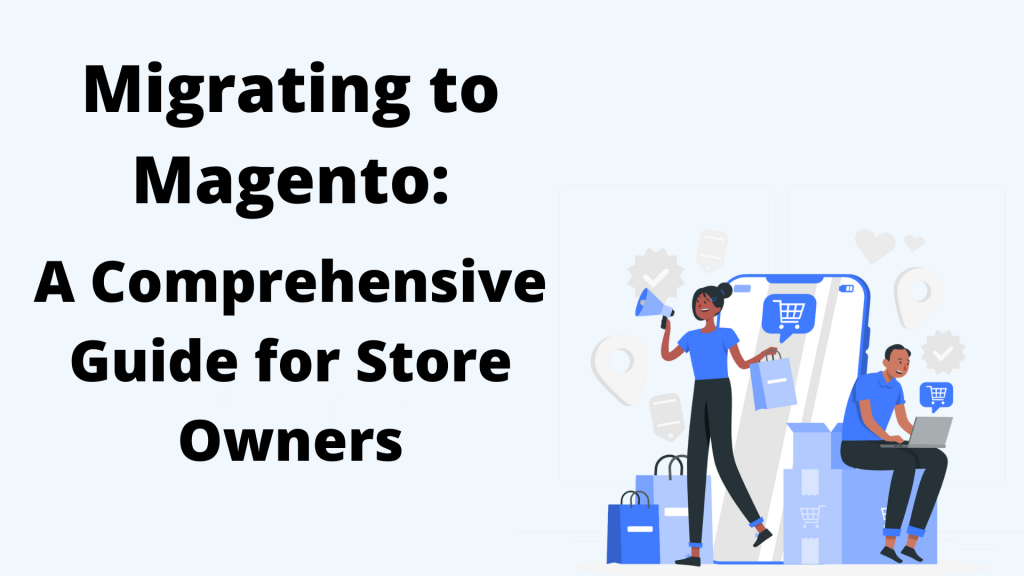
Magento is a powerful and highly flexible open-source ecommerce platform that is trusted by thousands of online store owners worldwide. It provides a comprehensive set of features and tools to create and manage online stores, allowing businesses to deliver a seamless customer experience. With Magento, users can easily organize their product categories, customize their website's design, and manage their online business efficiently through an intuitive admin panel. It also offers a wide range of extensions and integration options, allowing for third-party integration and additional services to enhance the functionality of the store. Whether you are a small business owner or a large enterprise, Magento provides the ideal ecommerce solution to help you expand your online presence and boost your business performance.
Why Migrate to Magento?
Migrating to Magento is essential for online store owners for several reasons. Firstly, Magento 1 will no longer receive security patches or updates after June 2020, leaving your online business vulnerable to security risks. Migrating to Magento 2 ensures that your store remains secure and protected.
Secondly, Magento 2 offers improved functionality and performance compared to Magento 1. With a more user-friendly admin panel, enhanced user experience, and advanced features, Magento 2 provides a seamless customer experience. Moreover, it supports faster page loading times and can handle higher traffic volumes, ensuring a smooth shopping experience for your customers.
Migrating to Magento 2 also opens up opportunities to integrate popular payment gateways and third-party extensions, enhancing your store's capabilities. Additionally, it allows for easy customization and provides a wide range of additional features through the Magento Marketplace.
In conclusion, migrating to Magento 2 is crucial to protect your online business and provide a secure and seamless shopping experience for your customers. Ignoring the migration process puts your business at risk and hinders your ability to take advantage of Magento's advanced features and capabilities.
Comparing Magento 2 and Magento 1
When considering migrating to Magento 2, it is important to understand the improvements and advantages it offers over its predecessor, Magento 1. Magento 2 Import Template provides enhanced functionality and performance, delivering an upgraded user experience for both store owners and customers. With a more intuitive admin panel, managing your online store becomes easier and more efficient. The platform also supports faster page loading times, ensuring a smooth and seamless shopping experience for your customers. Additionally, Magento 2 offers advanced features and improved performance, allowing for higher traffic volumes and better scalability. By upgrading to Magento 2, you can take advantage of its enhanced capabilities, including the ability to integrate popular payment gateways and third-party extensions. With its customizable nature and wide range of additional features available through the Magento Marketplace, migrating to Magento 2 can be a game-changer for your online business.
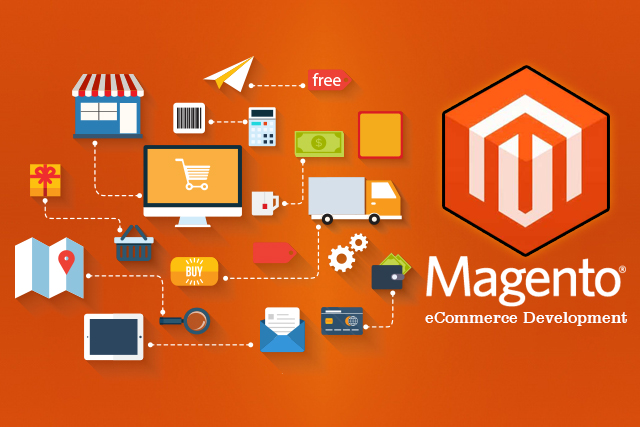
Benefits of Magento 2 over Magento 1
Magento 2 offers significant benefits over its predecessor, Magento 1, with numerous improvements and advancements. The new platform architecture of Magento 2 provides a more robust and scalable foundation, allowing for increased performance and enhanced user experience.
One of the key advantages of Magento 2 is its improved mobile optimization. As more people shop using their mobile devices, having a responsive and mobile-friendly online store is crucial. Magento 2 offers a mobile-first approach, ensuring that your store looks and functions seamlessly across different screen sizes. This helps to enhance the overall user experience and reduce bounce rates.
Additionally, Magento 2 introduces advancements in payment processing and checkout process. The platform supports popular payment gateways and provides a streamlined checkout process, reducing cart abandonment and improving conversion rates.
Security is another area where Magento 2 excels. With frequent security patches and updates, Magento 2 offers improved protection against potential threats, ensuring the safety of your online store and customer data.
Lastly, Magento 2 offers a wide range of extensions and customization options, allowing you to enhance your online store with additional features and functionalities. The Magento marketplace provides access to numerous third-party extensions, enabling you to tailor your store to meet your specific business needs.
In summary, Magento 2 provides a more advanced and feature-rich ecommerce platform compared to Magento 1, offering improved performance, mobile optimization, payment processing, security, and customization options for online store owners.
Drawbacks of Migrating from Magento 1 to 2
Migrating from Magento 1 to Magento 2 can come with its fair share of drawbacks and challenges. One of the potential risks involved is the possibility of data loss or corruption during the migration process. The complex nature of transferring large amounts of data from one platform to another can lead to unintended errors or data discrepancies.
Another drawback is the potential for functional discrepancies due to architectural and functional changes in Magento 2. Since Magento 2 is a complete platform redevelopment, certain features and functionalities in your Magento 1 store may not have a direct equivalent in Magento 2. This might require redevelopment or adjustments of custom code and third-party integrations.
The migration process also presents challenges in terms of skill and knowledge gaps. Magento 1 developers may need to acquire new skills and knowledge to effectively navigate the updated admin panel and utilize the migration tools provided by Magento 2. This can lead to a temporary decrease in productivity and potential delays in the migration process.
In summary, the drawbacks of migrating from Magento 1 to Magento 2 include the risks of data loss and corruption, functional discrepancies due to architectural changes, and the challenges of skill and knowledge gaps along with the need for customizations and adjustments of third-party integrations.
Pre-Migration Steps
Before embarking on the migration process to Magento 2, there are several important steps that store owners should take to ensure a smooth and successful transition. Firstly, it is crucial to thoroughly assess the current state of your online store on Magento 1. This involves taking stock of your current product categories, user experience, custom code, and any third-party integrations that are in place. Identifying potential issues or areas of improvement will help guide your migration strategy. Additionally, it is important to backup all of your data and files from your Magento 1 store to prevent any loss or corruption during the migration process. It is also recommended to perform all necessary updates and security patches on your Magento 1 installation to ensure it is running on the latest stable version. By completing these pre-migration steps, store owners can lay a strong foundation for a successful migration to Magento 2 and ensure a seamless customer experience throughout the transition.
Backing Up Your Current Store
Before embarking on a migration journey, it is crucial to back up your current store data to ensure its safety and avoid any potential data loss. Here are some step-by-step instructions on how to back up your store data in Magento.
- Full Backup: Magento offers a built-in feature that allows you to create a full backup of your store data. Simply log in to your Magento admin panel, go to System > Tools > Backup, and click on the "Create Backup" button. This will generate a complete backup of your database and media files.
- Database Backup: Additionally, you can choose to create a backup of only your database. To do this, access your hosting provider's control panel or use a tool like phpMyAdmin to export your database. Ensure that you select all tables and choose the "Export" option to save a copy of your database locally.
- Media Backup: Don't forget to back up your media files, including product images, videos, and other media assets. This can be done manually by downloading all media files via FTP or using a backup tool like Magento Backup Manager or BackupBuddy.
Remember, it's always best to have multiple backups stored in different locations, such as local storage, cloud storage, or an external device. Taking these precautionary measures will safeguard your precious data and give you peace of mind during the migration process.
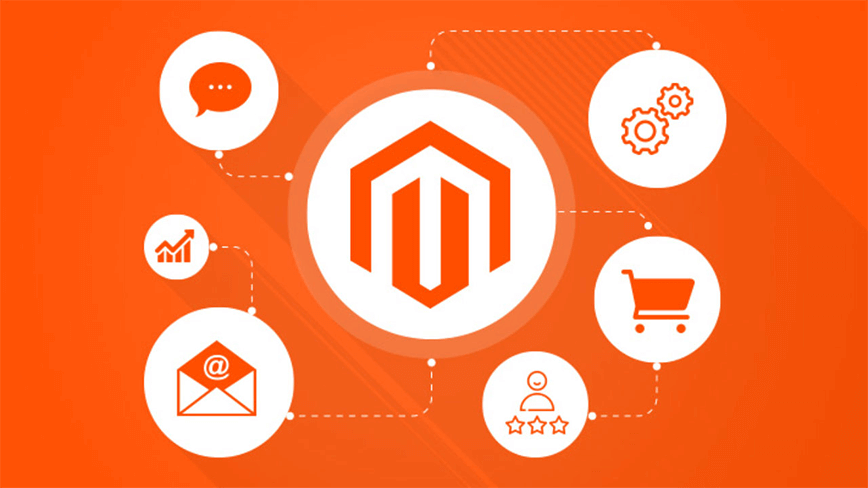
Preparing Your Data for Migration
1. Selecting Data Entities:
Before migrating to Magento, it is important to determine which data entities need to be transferred from your current store to the new website. Consider data such as products, customers, orders, categories, reviews, and other relevant information. Assess the importance of each entity in order to prioritize the migration process.
2. Establishing Connection:
To ensure a seamless migration, establish a connection between your current website and the new Magento website. This can be done by configuring the necessary settings in both platforms. Follow the platform-specific documentation or consult with your development team for specific guidance on how to establish this connection.
3. Using Migration Tools:
To automate the data transfer process, utilize migration tools such as Magento Migration Data Migration Tool or Cart2Cart. These tools offer a user-friendly interface and streamline the migration process. With these tools, you can easily map the data entities from your source cart (current platform) to the target cart (Magento) and initiate the migration.
4. Data Transfer:
With the connection in place and the migration tool configured, begin the data transfer process. The selected data entities will be transferred from your current website to the new Magento website. The migration tool will ensure that the integrity of the data is maintained throughout the process.
By following these simple steps and utilizing migration tools, you can efficiently prepare your data for migration to Magento. This will help ensure a smooth transition and minimize any potential disruptions to your online store.
Exporting XML Sitemaps and Content
Exporting XML sitemaps and content from your Magento store is a crucial step in the migration process. It ensures that all important data, including product categories, product descriptions, and other relevant content, is transferred accurately to your new website.
To export XML sitemaps and content from your Magento store, follow these step-by-step instructions:
- Login to your Magento admin panel.
- Navigate to the "System" tab and select "Export" from the dropdown menu.
- Choose the option for XML sitemaps or content, depending on what you want to export.
- Specify the file format and destination directory for the exported data.
- Select the specific data entities you want to export, such as product categories and descriptions.
- Set any additional filters or criteria for the export, if applicable.
- Click on the "Export" button to initiate the export process.
Exporting XML sitemaps and content accurately is essential for a seamless migration. It ensures that your new website will retain the same product hierarchy and descriptions, enabling a smooth transition for your customers. Additionally, exporting XML sitemaps helps search engines effectively crawl and index your new website, ensuring that your online store maintains its organic search visibility. By following these steps and exporting your XML sitemaps and content correctly, you can ensure a successful and efficient migration to Magento.
Setting Up the New Environment for your Online Store
After successfully migrating your online store to Magento, the next step is to set up the new environment to ensure a seamless shopping experience for your customers. This involves configuring store settings, designing your storefront, and setting up payment and shipping options.
To configure your store settings, log in to your Magento admin panel and navigate to the "Stores" tab. From there, you can manage general store information such as the store name, contact details, and default currency. You can also set up your preferred language, tax settings, and shipping methods.
Designing your storefront is crucial to attract and engage customers. Start by selecting a suitable theme from the Magento Marketplace or from third-party providers. The theme you choose should align with your brand identity and provide a user-friendly layout. After installing the theme, customize it to your requirements by adding your logo, changing colors and fonts, and optimizing the layout for different screen sizes.
Setting up payment and shipping options is essential to accommodate various customer preferences. Magento supports popular payment gateways such as PayPal, Stripe, and Authorize.net. To configure payment options, go to the "Stores" tab in your admin panel and select "Configuration." From there, navigate to the "Sales" section and choose "Payment Methods" to enable and configure your preferred payment gateways.
Similarly, to set up shipping options, go to the "Stores" tab and select "Configuration." In the "Sales" section, choose "Shipping Methods" to enable and configure shipping carriers such as USPS, FedEx, or DHL.
Lastly, consider downloading and installing additional applications that meet your specific business needs, such as inventory management or customer support software. The Magento Marketplace offers a wide range of extensions and modules to enhance your store's functionality.
By following these steps and customizing your new Magento environment, you can create a unique and successful online store that meets your specific requirements and delivers an exceptional shopping experience for your customers.
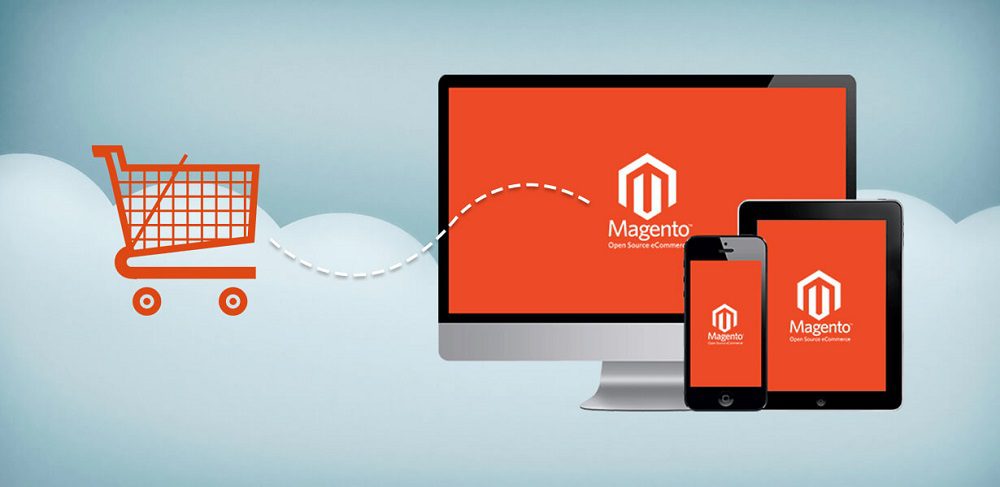
Installing the Latest Security Patches on Your Server
Ensuring the security of your Magento eCommerce store is crucial in protecting your customers' data and maintaining the trust of your online business. This becomes even more important after the end-of-life support for Magento 1, as vulnerabilities may arise that could potentially be exploited by hackers. Regularly updating and installing the latest security patches is essential to maintain the security of your server.
To install the latest security patches on your server, follow these steps:
- Check for available patches: Visit the Magento Security Center to check for any available security patches for your version of Magento. It is important to stay updated with the latest patches to protect your store from potential vulnerabilities.
- Download the patches: Once you have identified the necessary patches, download them from the Magento website. Make sure to choose the patches that are specific to your Magento version.
- Apply the patches: Connect to your server through FTP or SSH. Upload the downloaded patch files to your server and run them according to the provided instructions. This typically involves executing specific commands on your server to apply the patch files.
- Test thoroughly: After applying the patches, thoroughly test your Magento store to ensure that the patches have been successfully implemented. Test different functionalities, such as site navigation, checkout process, and payment gateways, to verify that everything is working as expected.
By regularly installing the latest security patches and maintaining the security of your server, you can protect your Magento eCommerce store from potential threats and provide a safe shopping experience for your customers.
Identifying Custom Code Used in Your Current Store
When migrating your online store to Magento, it is crucial to identify and understand the custom code used in your current store. This includes examining the code files and reviewing any modifications made to the theme or core files.
Start by thoroughly reviewing your code files to identify any custom code additions. Look for any third-party integrations or extensions that have been implemented in your store. These could include additional functionalities or features that have been added.
Next, focus on any modifications made to the theme or core files. This could involve changes in the design or layout of your store. It is important to identify these modifications so that they can be replicated or adjusted during the migration process.
Additionally, pay attention to any customizations made to the checkout process, payment gateways, or other functionalities. These are key elements that contribute to the user experience of your store and need to be properly migrated to ensure a seamless transition.
By thoroughly reviewing and identifying the custom code used in your current store, you will be better equipped to plan and execute a successful migration to Magento.
Migration Process: Step By Step Guide
Migrating your online store to Magento can be a game changer for your business. With advanced features, seamless customer experience, and robust security patches, Magento offers a powerful ecommerce solution. However, the migration process can seem overwhelming. In this step-by-step guide, we will walk you through the process of migrating from your current platform to Magento, ensuring a smooth transition and minimal disruptions to your online business.
1. Assess your current online store:
Before you begin the migration process, thoroughly review your code files to identify any custom code additions or third-party integrations that have been implemented in your store. This will help ensure that all functionalities and additional features are properly migrated.
2. Examine theme and core file modifications:
Next, focus on any modifications made to the design or layout of your store. Identify customizations made to the theme or core files to ensure they are replicated or adjusted during the migration process.
3. Evaluate checkout process and payment gateways:
Pay attention to any customizations made to the checkout process, payment gateways, or other functionalities that contribute to the user experience. These elements must be properly migrated to ensure a seamless transition and uninterrupted shopping experience for your customers.
4. Use migration tools and services:
Utilize Magento's migration tools and services to simplify the migration process. These tools can help automate data transfer, including product categories, customer information, and order history, from your source cart to the target cart.
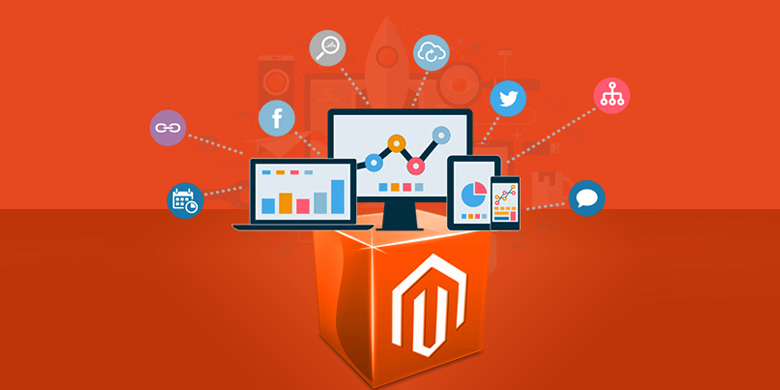
5. Test and fine-tune:
After the migration is complete, thoroughly test your new Magento store to ensure everything is functioning as intended. Make any necessary adjustments and refinements to optimize the user experience and ensure smooth business performance.
By following these steps, you can migrate to Magento with confidence, providing enhanced features and an improved shopping experience for your customers.
Choosing a Reliable Ecommerce Platform for Your Website
Choosing a reliable ecommerce platform for your website is crucial for the success of your online business. With so many options available, it's important to carefully consider the features, flexibility, and technical expertise required to manage the platform effectively. One platform that stands out is Magento Commerce.
Magento is an open-source ecommerce platform known for its flexibility and extensive features. It offers a wide range of customizable options to suit the unique needs of your business. With Magento, you have the ability to create a seamless customer experience, manage product categories effectively, and have full control over the admin panel.
However, it's important to note that Magento does require technical expertise to manage. It's a powerful platform that requires a knowledgeable development team to handle its complexities. If you're not comfortable with managing the technical aspects of your website, it may be worth considering additional development services or hiring a team with Magento expertise to ensure seamless operations.
In conclusion, when choosing an ecommerce platform, consider the flexibility, extensive features, and technical expertise required. Magento Commerce is a powerful solution that offers extensive customization options, but it's important to have the necessary resources and skills to manage it effectively.
FAQ about Magento Guide
What is Magento and why should I use it for my eCommerce store?
Magento is an open-source eCommerce platform that provides a flexible and scalable solution for building online stores. It's popular for its ability to handle large inventories, support multiple languages and currencies, and offer a wide range of customization options. If you're looking for a robust, feature-rich platform that can grow with your business, Magento is a great choice.
Is Magento easy to use for beginners?
Magento can be a bit challenging for beginners due to its complexity and technical requirements. However, with the right guidance and resources, even beginners can learn to use it effectively. There are many tutorials, community forums, and professional services available to help you get started.
How can I optimize my Magento store for better performance?
To optimize your Magento store, you can implement various strategies such as enabling caching, optimizing images, using content delivery networks (CDNs), and upgrading to the latest version of Magento. Additionally, using lightweight themes and extensions and ensuring your hosting environment is optimized for Magento can significantly boost performance.
 Magento is a powerful and highly flexible open-source ecommerce platform that is trusted by thousands of online store owners worldwide. It provides a comprehensive set of features and tools to create and manage online stores, allowing businesses to deliver a seamless customer experience. With Magento, users can easily organize their product categories, customize their website's design, and manage their online business efficiently through an intuitive admin panel. It also offers a wide range of extensions and integration options, allowing for third-party integration and additional services to enhance the functionality of the store. Whether you are a small business owner or a large enterprise, Magento provides the ideal ecommerce solution to help you expand your online presence and boost your business performance.
Magento is a powerful and highly flexible open-source ecommerce platform that is trusted by thousands of online store owners worldwide. It provides a comprehensive set of features and tools to create and manage online stores, allowing businesses to deliver a seamless customer experience. With Magento, users can easily organize their product categories, customize their website's design, and manage their online business efficiently through an intuitive admin panel. It also offers a wide range of extensions and integration options, allowing for third-party integration and additional services to enhance the functionality of the store. Whether you are a small business owner or a large enterprise, Magento provides the ideal ecommerce solution to help you expand your online presence and boost your business performance.






